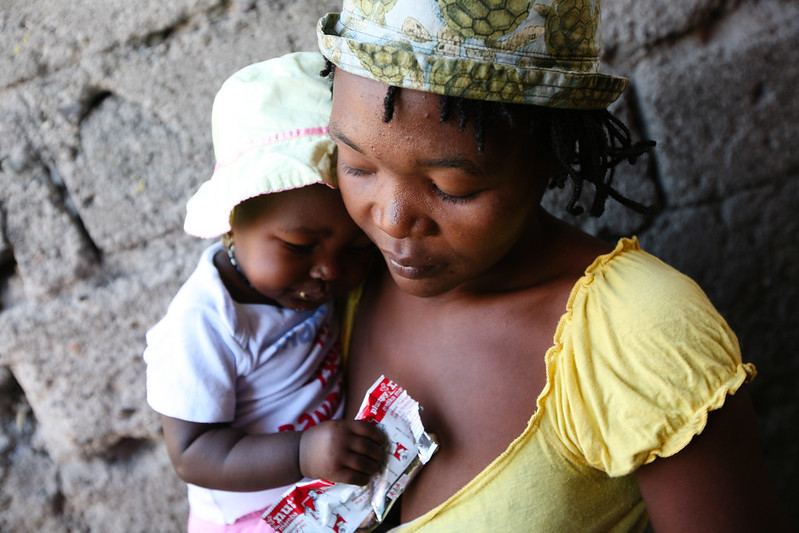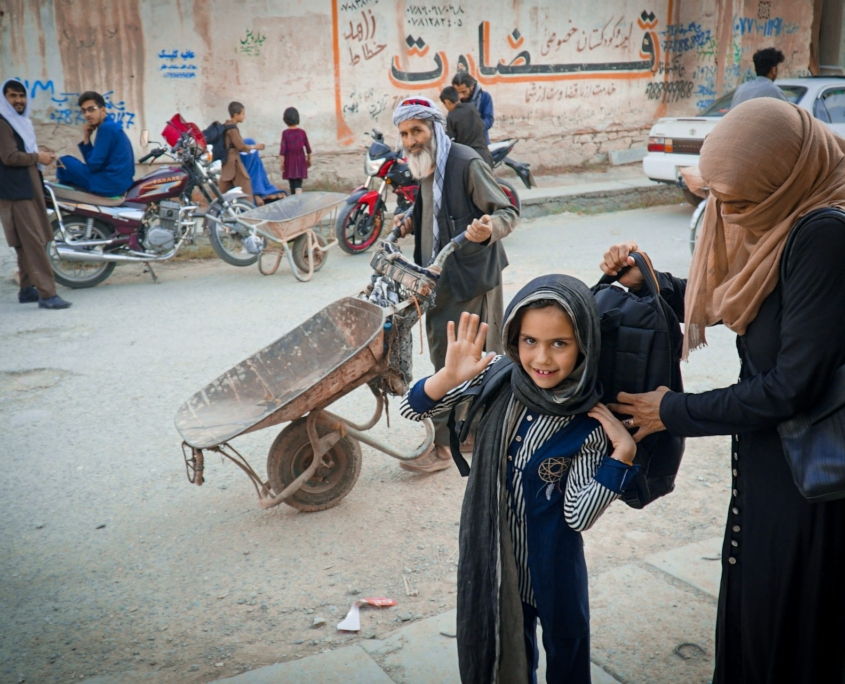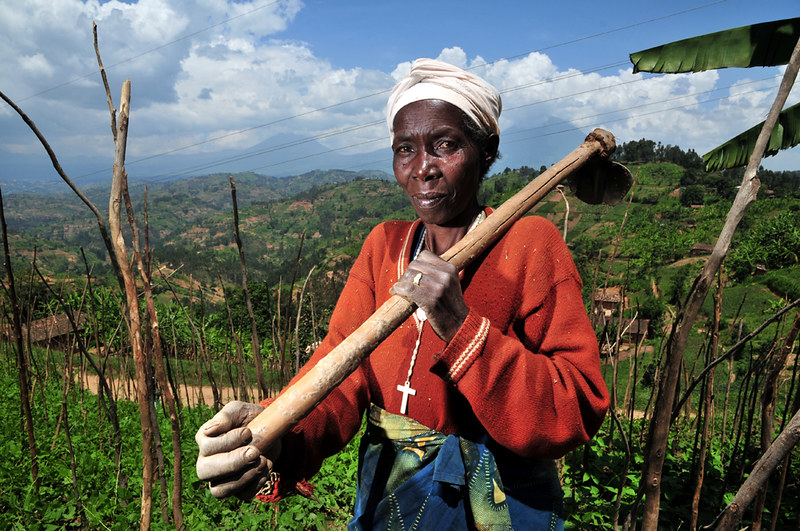 Food insecurity, a socioeconomic condition of limited or uncertain food access, often coincides with geopolitical tensions. Recent reports underscore the world is off track to achieve the United Nations’ (U.N.’s) zero hunger goal. Escalating conflict worsens acute food insecurity and international efforts face financial and structural challenges. Recent reports detail the trends in global food insecurity and food crises. Here are the key takeaways from the U.N. State of Food Security and Nutrition in the World, the 2024 Global Report on Food Crises (GRFC), International Food Security Phase Classification (IPC) and the World Bank Food Security Update.
Food insecurity, a socioeconomic condition of limited or uncertain food access, often coincides with geopolitical tensions. Recent reports underscore the world is off track to achieve the United Nations’ (U.N.’s) zero hunger goal. Escalating conflict worsens acute food insecurity and international efforts face financial and structural challenges. Recent reports detail the trends in global food insecurity and food crises. Here are the key takeaways from the U.N. State of Food Security and Nutrition in the World, the 2024 Global Report on Food Crises (GRFC), International Food Security Phase Classification (IPC) and the World Bank Food Security Update.
Food Insecurity: Global Trends
Global progress toward SDG 2 (Zero Hunger) remains stagnant since 2021. The broader picture reveals that hunger rates have plateaued since spiking in 2019. The prevalence of undernourishment (PoU) affected 9.1% of the population in 2023 — a slight increase from 7.5% two years prior.
Regional disparities are evident. In 2023, undernourishment increased in Africa by 0.5%, by 0.3% in West Asia and by 0.4% in the Caribbean, while remaining stable in East Asia and decreased by 0.4% in Latin America. This means more than 14 million additional undernourished individuals in Africa but five million fewer in Latin America and Asia.
Since 2019, the number of people facing acute food insecurity has increased across countries surveyed by the GRFC. While the situation improved in 17 countries, reducing the number of people facing high levels of acute food insecurity by 7.2 million, it worsened in 12 countries, where an additional 13.5 million people now face high levels of acute food insecurity. Gaza, South Sudan, Burkina Faso, Somalia and Mali are at risk of famine in 2024.
Food prices are rising globally, especially in middle and lower-income countries. The number of people who can afford a healthy diet returned to pre-pandemic levels, albeit with a disparity between lower and higher-income countries.
Overall, the world is not on track to meet its seven nutrition targets by 2030. While stunting and wasting are declining and exclusive breastfeeding rates are rising, there has been no improvement in low birthweight, obesity and anemia among women. Additionally, El Niño weather patterns have worsened food insecurity in southern Africa but have contributed to improved harvests in parts of East Africa, Latin America and the Caribbean.
Conflict
The main driver of global food insecurity is conflict. In the 59 countries and territories surveyed by the GRFC, more than 134 million people face high acute food insecurity where conflict is the primary driver, compared to 71.9 million and 75.2 million for extreme weather and economic shocks respectively.
In Sudan, the onset of civil war in 2023 disrupted food production, leading to acute food insecurity for 20.3 million people — an increase of 8.6 million. It is expected that more than 25 million people will face crisis conditions in 2024.
In Gaza, due to mass displacement, infrastructural damage and limited humanitarian access 2.5 million people (96% of its population) will face acute food insecurity in 2024.
In Haiti, approximately half of its population faced acute food insecurity due to violence. Armed gangs seized farms, agricultural products and the main port. Subsequent transportation disruptions and internal displacement are increasing food prices.
Policy Recommendations to Address Global Food Insecurity
Addressing food insecurity could prevent future social, economic and environmental costs. This includes aid for famine relief, refugee costs from hunger-caused displacement, health expenses and productivity loss due to undernutrition. According to estimates from the Global Nutrition Report 2021, economic gains from nutrition investment can potentially amount to $5.7 trillion annually by 2030 and $10.5 trillion annually by 2050.
While estimates vary, it would cost around $4 trillion to eliminate hunger by 2030. The current architecture is fragmented; food security financing must be scaled through international financial institutions, the U.N. emphasized. Recently, the World Bank made $45 billion available for food and nutrition response, supporting agricultural plans, employment opportunities and resilience programs.
The IPC warned the cessation of hostilities and humanitarian access is needed to alleviate famine in Gaza. Likewise, Haiti and Sudan risk famine as the effects of conflict worsen. Conflict must be reduced to effectively address systemic failures and strengthen governance. The IPC also calls for early action, humanitarian access and multi-sectoral responses to avoid famine.
Looking Forward
The U.N. reports highlight that global food insecurity remains a pressing issue, with conflict being the primary driver. Countries like Sudan, Gaza and Haiti face severe food crises due to ongoing conflicts and economic challenges. Addressing food insecurity through comprehensive international efforts and improved governance could prevent future crises and significantly enhance global well-being.
– Luke Ravetto
Luke is based in Boston, MA and focuses on Politics for The Borgen Project.
Photo: Flickr
 Yemen has triumphed through a
Yemen has triumphed through a 

 Located off the southern tip of Malaysia, Singapore, one of Asia’s wealthiest nations, boasts a thriving economy and impressive infrastructure. Despite this, the perception that all of its 5 million citizens live above the poverty line is misleading. In reality, numerous Singaporeans struggle to meet basic needs, with many earning insufficient incomes to secure stable food supplies. Consequently, food insecurity remains a significant concern within the country. As of 2023, more than
Located off the southern tip of Malaysia, Singapore, one of Asia’s wealthiest nations, boasts a thriving economy and impressive infrastructure. Despite this, the perception that all of its 5 million citizens live above the poverty line is misleading. In reality, numerous Singaporeans struggle to meet basic needs, with many earning insufficient incomes to secure stable food supplies. Consequently, food insecurity remains a significant concern within the country. As of 2023, more than  A collection of U.K. charities have united to advocate for better circumstances for U.K. residents in recipients of universal credit. This comes after a groundbreaking investigation into hunger in Northern Ireland by the Trussell Trust.
A collection of U.K. charities have united to advocate for better circumstances for U.K. residents in recipients of universal credit. This comes after a groundbreaking investigation into hunger in Northern Ireland by the Trussell Trust.
 Afghanistan has faced long-term, simultaneous crises for decades. Its recent drop from number one
Afghanistan has faced long-term, simultaneous crises for decades. Its recent drop from number one 
 In Rwanda, permaculture design is gaining traction as a tool to
In Rwanda, permaculture design is gaining traction as a tool to 